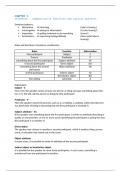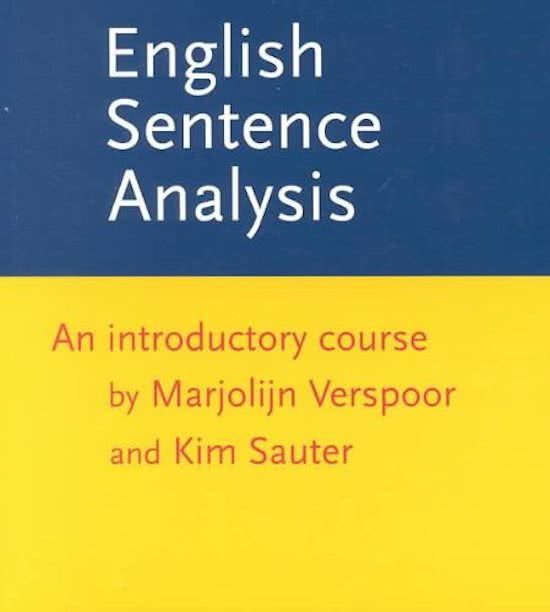CHAPTER 1:
sentences – communicative functions and typical patterns
Sentence patterns:
Declarative informing (John is leaving.)
Interrogative asking for information (Is John leaving?)
Imperative getting someone to do something (Leave!)
Exclamatory expressing feeling/attitude (How awful John is
leaving!)
Roles and functions of sentence constituents:
Roles Function Abbreviation
First participant Subject S
Process Predicator P
Something about the first participant Subject attribute SA
A second participant Direct object DO
Something about the second Object attribute OA
participant
A third participant Indirect object IO
Benefactive object BO
The setting Adverbial A
Explanation:
Subject - S
First of all, the speaker names at least one person or thing and says something about him,
her or it. We will call this person or thing the first participant.
Predicator - P
Then the speaker names the process, such as is, is holding, is walking, which describes the
act, deed state of being or becoming that the first participant is involved in.
Subject attribute – SA
If the speaker says something about the first participant, it will be an attribute describing a
quality or characteristic, or one or more words identifying the participant or giving the class
the participant is a member of.
Direct object
The speaker may choose to mention a second participant, which is another thing, person,
event, or situation that stands out in the scene.
Object attribute
In some cases, it is possible to name an attribute of the second participant.
Indirect object or benefactive object
It is possible for the speaker to name three participants. In such cases, something is
transferred from one participant to another.
, Adverbial
The speaker may choose to give information about the setting, which tells how, where,
when, why, under what condition, in spite of which condition the process or the event or
situation takes place.
Examples:
The mother / had given / the boy / a balloon / for his birthday.
S P IO DO A
The little boy / was / very proud / yesterday.
S P SA A
All day long, / the little boy / considered / the balloon / his greatest treasure.
A S P DO OA
Typical sentence patterns:
The running pattern – intransitive verbs
consist of a subject and predicator.
John (S) is running (P).
The being pattern – copula verbs
consist of a subject and predicator followed by a subject attribute.
John (S) is (P) the runner (SA).
The doing/seeing pattern – monotransitive verbs
consist of a subject and predicator followed by a direct object.
John (S) kicked (P) the ball (DO).
The giving/buying pattern – ditransitive verbs
consist of a subject, predicator, indirect/benefactive object, and direct object.
John (S) gave (P) Peter (IO) the ball (DO).
The making/considering pattern – complex-transitive verbs
consist of a subject and predicator followed by a direct object followed by an object
attribute.
John (S) considered (P) the ball (DO) out (OA).






